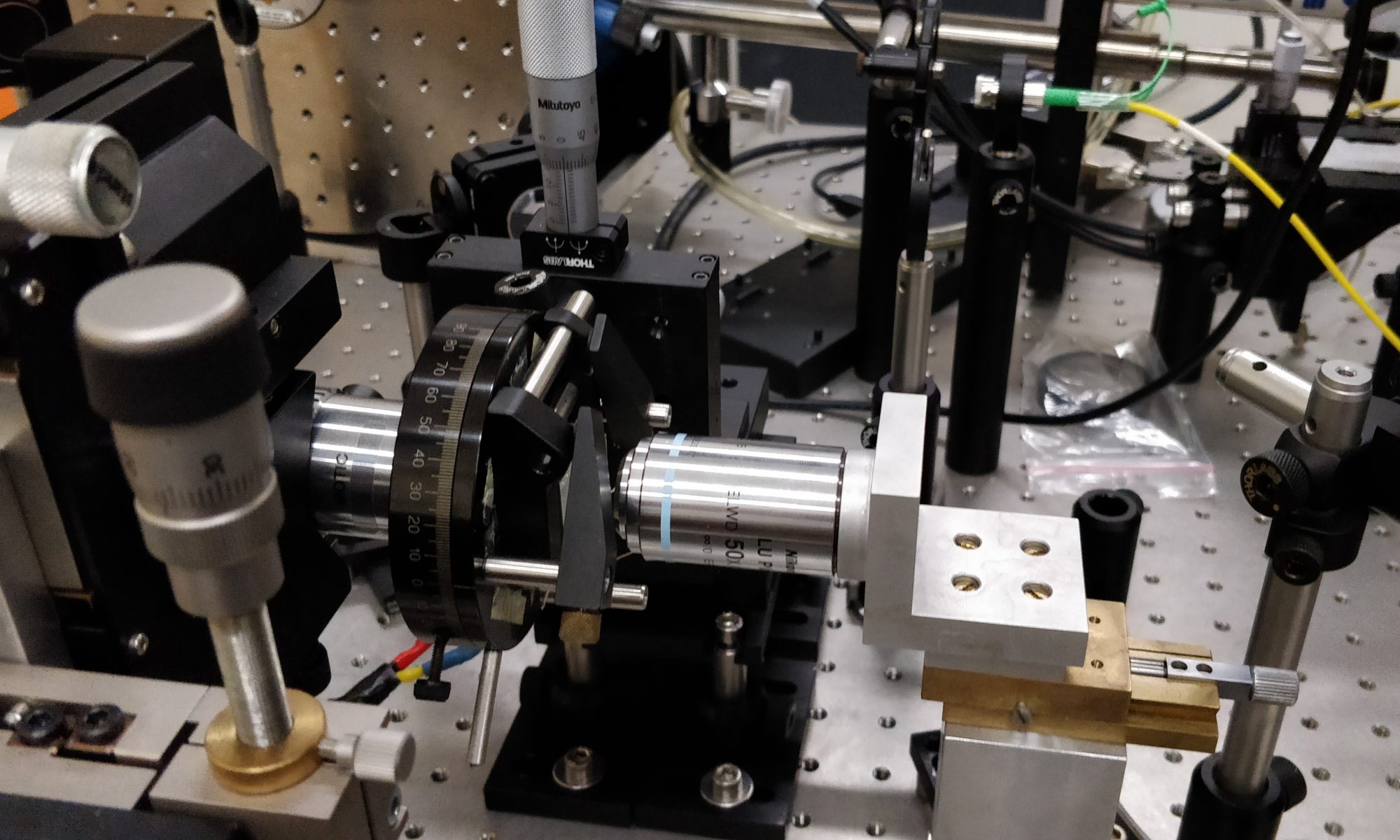![]()
Scientists from the Faculty of Physics, the University of Warsaw (FUW), together with scientists from Military University of Technology (MUT) created a thin optical cavity filled with liquid crystal, in which they trapped light. Under these conditions, photons behave as massive particles, and therefore are different from photons moving in a vacuum. This behaviour of photons in thin optical cavities has been observed before, but it was difficult to manipulate them, because light does not respond to electric or magnetic fields. We were able to create standing waves of light in the cavity (so-called “cavity modes”), whose energy was different when the electric field of the wave (polarisation) was directed perpendicularly to the molecules of liquid crystal filling the cavity, and different for polarisation along their axes (this phenomenon is called optical anisotropy). The orientation of liquid crystal molecules is controlled by applying an electric field to the electrodes integrated within the cavity. We observed that with the change of an orientation of the liquid crystal molecules in the cavity, the photons trapped there behaved like quasiparticles endowed with a magnetic moment (spin), subjected to an artificial magnetic field. The behaviour of light in this kind of a cavity can be explained using the analogy to the behaviour of electrons in condensed matter, because the equations describing motion of photons trapped in a cavity (Hamilton’s equations) resemble the equations of motion of electrons with spin. Thus, we managed to build a photonic system that perfectly imitates electronic properties and leads to many surprising physical effects. Work presenting the results of these studies has recently appeared in the journal Light: Science & Applications (2018) and the Science magazine (2019).
The subject of research proposed in the project is the use of the possibility of tuning light modes in an optical cavity to control the direction and polarisation of light emitted from or transmitted through the cavity. It is expected that such light will have unusual properties resulting from the symmetry of the medium in which it propagates: polarisation patterns resembling magnetic quasiparticles will appear (so-called half-skyrmions), as well as persistent spin helix discovered in semiconductors, unidirectional light propagation modes, together with various types of topological effects – e.g. points in the space of states called „diabolical” (by circling them we get a phase change of the wave functions of a system to the opposite, and you need to circle them twice for the system to return to its original state). Liquid crystal microcavities developed at FUW and WAT can implement many of such ideas – in one optical cavity one can smoothly (adiabatically) pass between Hamilton equations describing various phenomena in condensed matter that are associated with the coupling of motion and spin of electrons (so-called spin-orbit Hamiltonians). We will be able to examine the spin textures of photons in the optical spin Hall effect regime (observed in semiconductors) and observe how, with the change of the orientation of liquid crystal molecules, the textures smoothly evolve to a situation, in which circularly polarised light modes propagate in the cavity creating linearly polarised stripes on the sample surface (persistent spin helix mentioned above). By using two or more beams we will check how the half-skyrmions interact with each other and whether they will be useful to build quantum simulators.
An additional advantage of liquid crystal microcavities is the possibility of placing light emitters inside them. Until now, experimental research on microcavity systems has focused on reflected or transmitted light. The cavities with the emitter activated for lighting, will emit light from the inside. By examining the energy and polarisation of the emitted light, we will be able to learn directly about photon modes preferred by the cavity (so-called eigenstates). So far, no one has built such cavities, and our group has a chance to be the first to show light emission from topological states – appearing on the border between areas with slightly different symmetry, resulting from the equations of motion (Hamilton). We have an idea how to create such a system, and use light tuning to directly observe topologically protected states. For now, we do not know which emitter will work the best in tuned cavities – we need to test several candidates, and we focus on colored dyes and luminescent proteins. There is not much space for the emitter, because our cavities are very thin – they are less than 4 micrometer thick. The best dye should not only emit efficiently at room temperature, but also should not degrade under the influence of light (photodegradation), it should be able to be built into the cavity as part of one of the layers, or it may dissolve in a liquid crystal.
The project will be implemented by a consortium of UW (leader) and MUT. MUT technological and University of Warsaw experimental capabilities complement each other perfectly, and several years of cooperation have already resulted in the publications in renowned scientific journals. We hope that the results of this project will also become the origin of new research areas on the border between photonics and solid state physics.

